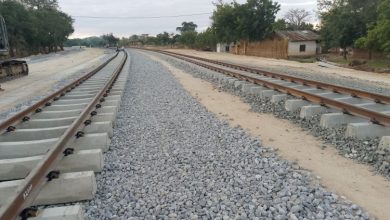Hunger bites 4m
Four million people are at risk of hunger in the 2025/26 consumption period, representing 22 percent of the country’s projected population of 18.5 million, Malawi Vulnerability Assessment Committee (Mvac) data has shown.
The Mvac annual food security assessment report released yesterday shows that the current projection represents a slight decline compared to the previous consumption period when about six million people faced hunger.
However, the number is an increase from 2.9 million people authorities estimated would face hunger between May and September this year.
The report states that Malawi’s national maize production for the 2024/25 agricultural season is below the country’s five-year average.

Reads the report in part: “Although national maize production saw a slight increase of 5.4 percent from 2 712 578 metric tonnes [MT] last season to 2 859 949MT this season, erratic rainfall and limited access to agricultural inputs across all districts influenced this modest rise.
“Despite functional markets across the country, high inflation and below average maize production are driving up food prices.”
The multi-stakeholder grouping’s report further says to protect livelihoods; the vulnerable population will require humanitarian food assistance of roughly 200 000MT of maize with an estimated cash value of K387.20 billion for the period ranging between three and six months.
The Department of Disaster Management Affairs (Dodma) has said the report will help them start mobilising funds for the national response plan.
Dodma spokesperson Chipiliro Khamula in an interview yesterday said the department, in collaboration with other stakeholders, will develop the 2025/26 Lean Season Food Insecurity Response Plan.
“The release of the report is a path in the right direction, as it is long overdue. This report forms the basis for the department to develop the lean season food insecurity response plan to mobilise resources and guide the implementation of the provision of relief assistance,” he said.
In a separate interview, Centre for Social Concern economic programmes officer Agnes Nyirongo said the food insecure population is largely due to poor administration of the Affordable Inputs Programme (AIP) coupled with adverse weather conditions this year.
She called on authorities to intervene on the situation while planning to avoid a similar situation next year.
Said Nyirongo: “Over the years, the country has relied on AIP, but the benefits are not quite impressive. That alone has to be looked into.
“The government and other stakeholders also need serious investment in irrigation farming to avert the perennial food shortages, because as you can see, climate-related shocks have been with us over the past few years.”
Consumers Association of Malawi executive director John Kapito said the number of food insecure people demands immediate intervention from government.
He recommended that government should flood the market with maize as that will reduce the demand for the staple grain, helping the vulnerable in the process.
Said Kapito: “Prices of maize are skyrocketing and the most vulnerable cannot afford it. This is the period that we see people dying because of hunger and we hope that we will not see the replica of that. Purchase of maize should be done as an emergency so as to help Malawians that are food insecure.
“Whether government purchases the commodity from within or outside, so long as people are helped with food, we will be fine.”
This year’s figures show a lower number of people experiencing high levels of acute food insecurity compared to the last two years.
About 6 188 379 people faced hunger in the 2024/25 updated assessment, while 4 402 000 people were hungry in the 2023/24 consumption year.
This year’s figure, however, is higher than that of the 2022/23 and 2021/22 consumption years, when 3 818 554 and 1 496 394 were hungry, respectively.
In June this year, the World Food Programme (WFP) projected Malawi’s maize deficit at 1.2 million MT or 33 percent of harvest. The national annual maize requirement is 3.7 million MT.
Earlier, Ministry of Agriculture had projected a maize deficit of 537 380MT in the 2024/25 growing season with Parliament approving K99.5 billion in the 2025/26 National Budget towards irrigation development to produce 337 000MT of maize on 56 113 hectares of irrigable land, which is still below the projected deficit.
Ministry of Agriculture’s strategy to bank on irrigation to cover the maize deficit and stabilise prices this year has drawn criticism, with agriculture policy experts casting doubt on its practicality.





